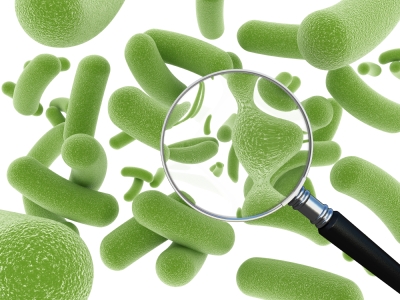
What if you could help protect yourself from certain diseases by populating your gut with “good” bacteria, or selectively getting rid of “bad” ones? Two news articles suggesting this possibility caught my eye this week. The articles both summarized results from the microbiome project—a research effort geared towards developing a deep understanding of how the bacteria that live in and on our bodies influence our health. Analyses of these bacterial populations are providing new insights that suggest we are much more than the sum of our parts, and that our health may depend not only on our own genes and lifestyle but also on the contributions of the bacteria that colonize us.
Collectively, the microorganisms that live in and on the human body are known as the microbiota, and the microbiome is the genetic information represented by these populations. In recent years, the NIH Human Microbiome Project and the European Commission Metagenomics of the Human Intestinal tract (MetaHIT) program, have begun the task of genome wide sequencing of these microbial populations, with the goal of understanding how they contribute to human health and disease.
Some of the results so far suggest that the genetic profile of a persons associated microorganisms may be unique to each individual, and play a role in susceptibility to and protection from disease. Possible applications of this knowledge include new and intriguing possibilities for development of identification technologies based on bacterial colonists, development of foods that replenish populations of “good” bacteria, and the manipulation of microbial populations as a disease treatment or prevention mechanism.
The news stories I saw this week (1,2) summarized results from other microbiome studies that reveal a surprising number of ways in which gut microorganisms can contribute to our health. One study, published in Nature in March 2011, suggested that differences in susceptibility to heart disease may not only depend on genetic factors and diet, but also on the presence/absence of the microbial populations capable of converting lipids from fatty foods into metabolites that are associated with heart disease. The idea that microbial colonists may need to be considered in addition to genetics and diet as risk factors for heart disease adds yet another layer of complexity to an already complicated picture. But also raises possibilities for new approaches to treatment and prevention of disease—for example the design of heart-healthy foods that colonize the gut with “good” bacteria rather than bad.
As summarized in Science , other results from the microbiome project have suggested links between gut bacterial populations and obesity, and have suggested that antibiotic usage may have resulted in changes in gut microbial populations over the long term that may affect susceptibility to other diseases. The Science news article summarizes the results of studies in mice suggesting that introduction of particular bacterial populations can cause obesity and discusses how such studies have led to speculation that weight gain could be also be influenced by the manipulation of gut bacterial populations.
Perhaps the most fascinating aspect of all this work is the idea that certain aspects of human health and disease may be able to be modulated by introducing or eliminating various microorganisms from the gut. Of course it is far too early to draw these conclusions, and sorting out the complex interrelationships between us and our microbes is obviously a huge and complicated task. But the work so far seems to indicate that some amazing possibilities may arise from efforts like the microbiome project and other such studies that give us a deeper understanding of our relationship with our attendant micrororganisms.
References
- Pennisi, E. (2011) Girth and the Gut (Bacteria). Science 332, 32-33.
- Common dietary fat and intestinal microbes linked to heart disease
- Wang, Z., Klipfell, E., Bennett, B. et al. (2011) Gut flora metabolism of phophatidylcholine promotes cardiovascular disease. Nature, 472 (7341), 57–63.
Isobel Maciver
Latest posts by Isobel Maciver (see all)
- 3D Cell Culture Models: Challenges for Cell-Based Assays - August 12, 2021
- Measuring Changing Metabolism in Cancer Cells - May 4, 2021
- A Quick Method for A Tailing PCR Products - July 8, 2019
